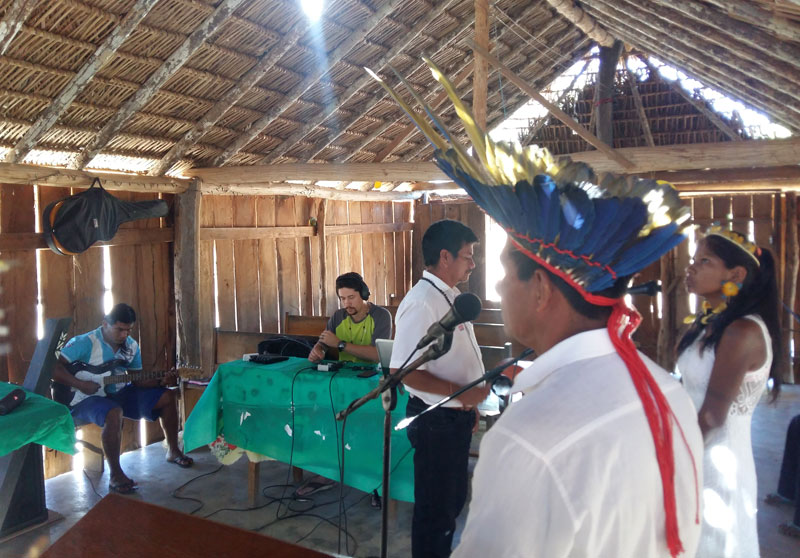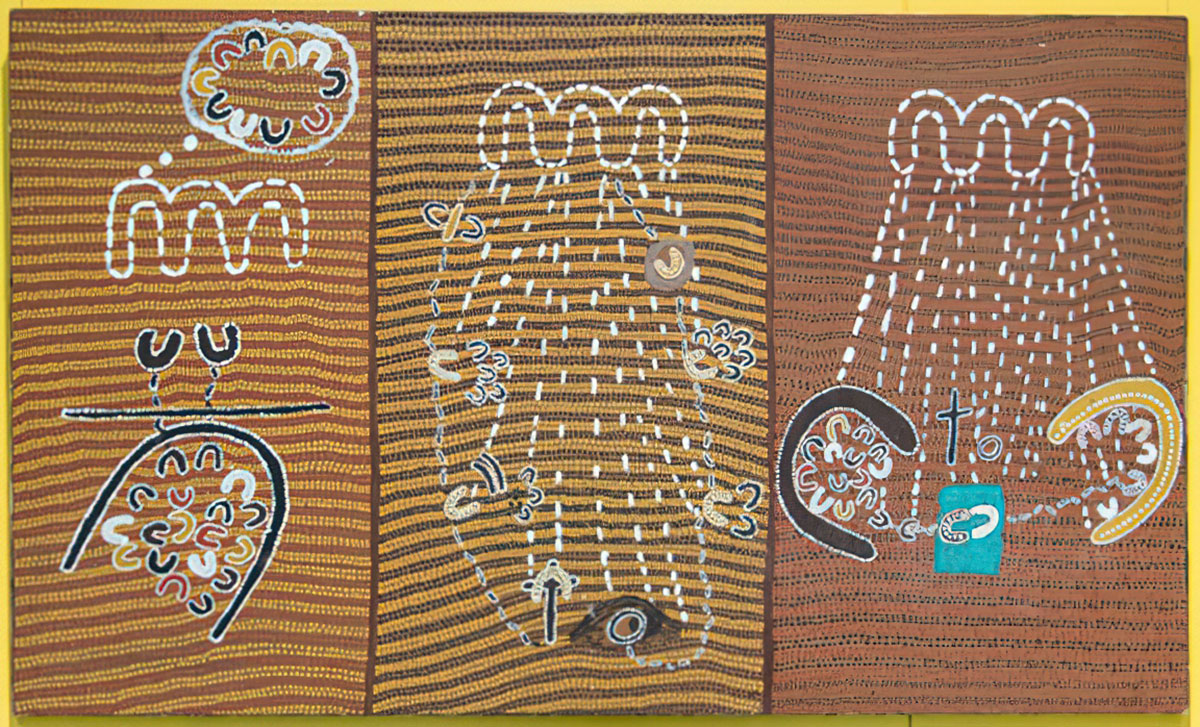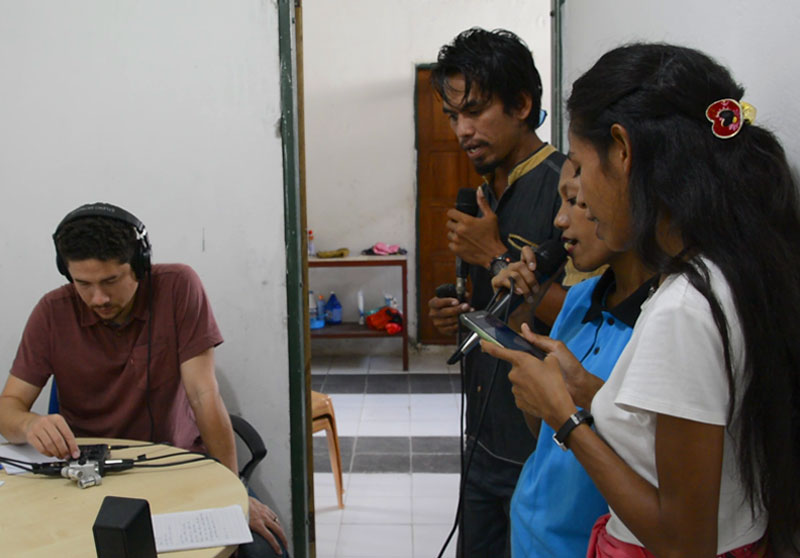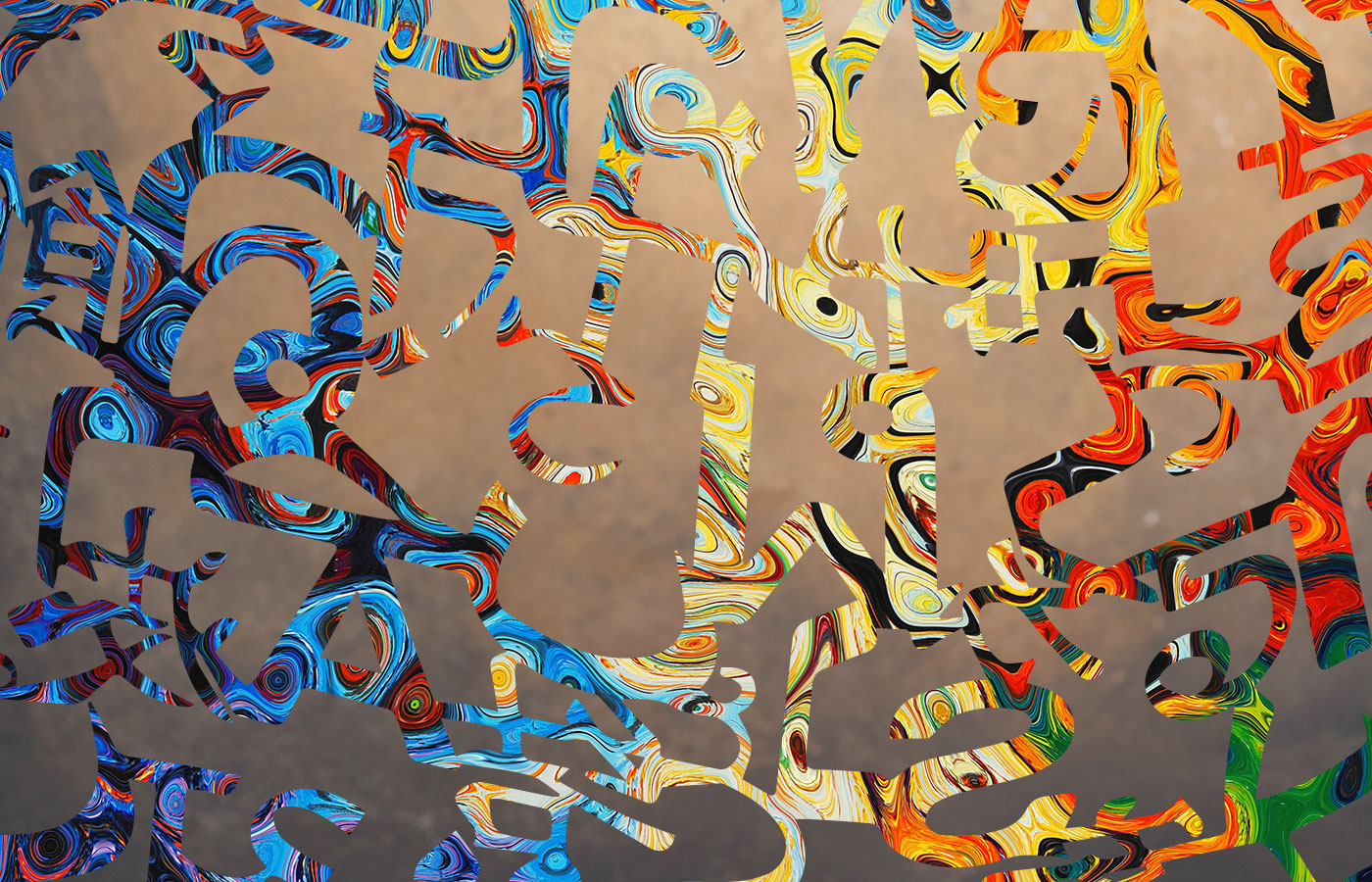Christians in every culture must be empowered to engage with God through their own artistic expressions.
In recent years, the church has adopted many strategies for its role in God’s mission. Academic fields such as anthropology, linguistics, and education have provided the intellectual background for such approaches.
This article establishes how God values beauty as revealed in Scripture and how this understanding grounds the usage of arts in culturally appropriate worship practices in missionary work, championed by ethnodoxology, an emerging field that combines ethnomusicology with missiology, worship studies, and the arts.
Beauty Matters in Worship
The beauty of culture manifested in local artistic forms is an essential part of the worship expression of people around the world.
‘God has made everything beautiful in its time’, said the preacher (Ecc 3:11). God loves beauty. He planted trees in the garden of Eden that were pleasant for the eyes and good for food (Gen 2:9). He filled two artisans, Bezalel and Oholiab, with his Spirit, so that they could make ravishing golden sculptures for the tabernacle (Exo 31:3). He put a colorful rainbow in the sky to reinforce his covenant with humankind (Gen 9:12,13). He reveals his glory through the beauty of nature (Ps 19:1). God values aesthetics and he works beautifully in his world.[1]
The Psalmist also says that there is splendor and beauty in God’s sanctuary (Ps 96.6), indicating that he wants to be praised with all the beauty his people can offer him. He gifted humanity with different cultures so that people could worship him with a variety of traditions and customs. The Israelites used their instruments to sing to God, as seen in Psalm 150. Jesus released traditional Jewish and Samaritan worship practices when he inaugurated a time where worship would happen in spirit and truth (John 4); therefore, the Greeks were allowed to worship God in their way without identifying themselves with the Jewish religion (Acts 15). The beauty of culture manifested in local artistic forms is an essential part of the worship expression of people around the world. Because creativity is part of the Imago Dei (image of God) in us, the arts we make ‘reflect something of the beauty and the truth of God’ (CTC II-A-5).

Songwriting workshop with Xerente people (Brazil)
Ethnodoxology: A New Approach for Worship in Missions
The relationship between worship and mission has been extensively emphasized by theologians like John Piper, who says that ‘mission exists because worship doesn’t’[2]. In other words, missionary activity is only necessary because there are people in different places in the world that still do not render glory to God as the one and true God. Considering that true worship is the reason for missions and that God desires to be worshipped in the beauty of his holiness, a new missional strategy emerges. The ethnodoxology field aims to integrate the beautiful things people already produce with their culture into their expression of worship to the true God.
The ethnodoxology field aims to integrate the beautiful things people already produce with their culture into their expression of worship to the true God.
Dave Hall initially defined ethnodoxology as ‘the study of how and why people of diverse cultures glorify the true and living God’.[3] This concept dates back to the 1960s when Wycliffe Bible Translators ethnomusicologists such as Vida Chenoweth[4] and Tom Avery[5] began to promote the idea that people could worship God with their own music traditions instead of the then-common practice of translating music from Western culture. The Global Ethnodoxology Network (GEN), a group comprised of more than 350 workers who practice ethnodoxology in more than 80 countries, has broadened this concept, stating that ‘ethnodoxology is the interdisciplinary study of how Christians in every culture engage with God and the world through their own artistic expressions’.[6]
The Arts Are Not a Universal Language
Ethnodoxology emerged from the development of missiological thinking in two main ideas. The first idea relates to the correct understanding that arts do not communicate in the same way in every culture. As a means of communication, every culture has its own codes used to communicate with their artistic language. For that reason, we cannot say that music, drama, or visual arts are universal languages.
Robin Harris, chair of the Center of Excellence in World Arts at Dallas International University, says that ‘this foundational aspect of ethnodoxology sets it apart from many other approaches to worship and arts in mission’.[7] Not understanding this basic concept may cause cross-cultural workers to see their own artistic traditions as more appropriate and perfectly adequate to communicate the gospel; after all, if this so-called universal language is good for me, it will also be good for others. As a result, they may end up privileging their artistic traditions more than the local ones. ‘Respecting cultural differences and celebrating indigenous artistic expression’ would be a better approach, as stated in The Cape Town Commitment (CTC II-A-5).
An excellent example that shows art is not a universal language, widely understood in all cultures, is the iconography of the Warlpiri people from central Australia. Their visual arts use culturally identified symbols to depict entire stories. For example, a person is represented by an arch, a spirit by a dotted arch, and an ill or dead person by a horizontal line. If a person from another country sees these symbols for the first time, that person would not understand the story without a Warlpiri explaining what those symbols mean.[8]

‘Creation to Revelation – Warlpiri Visual Art’ (Rachel Napaljarri Jurra (1960-2016), Warlpiri (Western Desert). Acrylic on canvas | Alice Springs Baptist Church 2016 | Artwork: Copyright © Rachel Napaljarri Jurra | Photograph: Copyright © Peter Brook)
Another example comes from William Wadé Harris, a well-known Liberian evangelist in West Africa in the early 20th century. Having grown up in the Methodist tradition, he learned Western hymns, some of which were his favorites. Yet during his ministry, when new African believers asked him what kinds of songs they should sing to please God, Harris wisely replied: ‘God has no personal favorite songs [. . .] It is sufficient for us to offer hymns of praise to him with our own music and in our own language for him to understand.’[9] As a result, new believers adapted several traditional musical genres to create new songs to praise God. Today they have composed more than a thousand hymns that tell Bible stories and serve as prayer and faith confession.
The arts are an effective means of communication and, if correctly approached, they can powerfully convey the message of the gospel to the intended culture.
Arts Are an Effective Means of Communication
The second idea that contributed to the rising of ethnodoxology is that the arts are an effective means of communication and, if correctly approached, they can powerfully convey the message of the gospel to the intended culture. Brian Schrag, SIL senior ethnomusicologist and arts consultant, gives some reasons for that effectiveness. Local arts can mark messages as important, increasing their impact. Additionally, they help people to memorize information and to express sensitive issues without being repressed.[10]
A few years ago, I led a songwriting workshop for the church leaders of the Xerente, an indigenous people in Central Brazil. When I explained that Psalm 40 says that God gives us new songs so we can testify about him to others, one of the participants stood up and said aloud, ‘Music is like an arrow that pierces our hearts.’[11] He was right. Using local artistic traditions to present new biblical concepts that are unknown to the people is like ‘serving Scriptures in local dishes’.[12] The people can grasp the message because it is presented in familiar artistic forms. In another workshop I taught, people from East Timor used traditional wedding dowry songs to compose biblical songs about the good relationship between husbands and wives.
Before feeling compelled to use every single artistic expression in the culture to worship God, it is wise to remember that sin has affected everything in our existence. That means there are aspects in every culture that can be used to glorify God, but also cultural expressions that are tainted when humankind sinned. As a result, arts can be both an expression ‘of our brokenness, and of the hope that [. . .] all things will be made new’ (CTC II-A-5).

Songwriting workshop in East Timor
Resources to Integrate Local Arts into Worship
To help Christians understand the local arts of the community they serve, Brian Schrag, with a team from GEN, compiled Creating Local Arts Together: A Manual to Help Communities Reach Their Kingdom Goals.[13] Because GEN values ‘arts as indispensable to human thriving’[14] and respects the capacity of communities to ‘shape their own artistic realities’, this book was designed to lead communities to use their local arts to reflect the values of the kingdom of God.
Through a flexible process involving seven steps, arts advocates will engage in conversations with the community (one for each step), which will help them to understand local culture and its arts, to do a profound analysis of an artistic genre, and to create new artwork to solve their immediate issues in the community.
![]() Step 1: Meet the community and its arts. Take a broader look into the community’s cultural aspects and encourage members of the community to see the different artistic resources they have.
Step 1: Meet the community and its arts. Take a broader look into the community’s cultural aspects and encourage members of the community to see the different artistic resources they have.
![]() Step 2: Specify kingdom goals.[15] Investigate the good and bad aspects of that community and relate them with the values of God’s kingdom. The aim is to help them choose an aspect they desire to change so they can better reflect the kingdom of God.
Step 2: Specify kingdom goals.[15] Investigate the good and bad aspects of that community and relate them with the values of God’s kingdom. The aim is to help them choose an aspect they desire to change so they can better reflect the kingdom of God.
![]() Step 3: Connect genres to goals. Lead the community to identify which artistic tradition is more suitable to communicate a message to reach the chosen kingdom goal.
Step 3: Connect genres to goals. Lead the community to identify which artistic tradition is more suitable to communicate a message to reach the chosen kingdom goal.
![]() Step 4: Analyze genres and events. Engage in a thorough analysis of the chosen artistic tradition.
Step 4: Analyze genres and events. Engage in a thorough analysis of the chosen artistic tradition.
![]() Step 5: Spark creativity. Encourage the community to create new artworks with the message to reach the kingdom goal using several proposed sparking activities.
Step 5: Spark creativity. Encourage the community to create new artworks with the message to reach the kingdom goal using several proposed sparking activities.
![]() Step 6: Improve results. Search for cultural ways to evaluate the newly created artwork to improve what has been done.
Step 6: Improve results. Search for cultural ways to evaluate the newly created artwork to improve what has been done.
![]() Step 7: Celebrate and integrate for continuity. Plan for this process to continue in the future, with new kingdom goals, new genres, and new intended audiences.
Step 7: Celebrate and integrate for continuity. Plan for this process to continue in the future, with new kingdom goals, new genres, and new intended audiences.
Based on this book, GEN developed Arts for a Better Future (ABF), a one-week intensive workshop. A central premise of ABF is that arts advocates will work with the community towards the creation of a new artwork. The benefits of such an approach include ownership of the work by the people and a more likely continuity of the artistic tradition.[16]
From 2011 through 2021, more than 900 participants were trained through ABF in 14 countries. Such a variety of training sites and languages led to the publication of a condensed version of Creating Local Arts Together being translated into Spanish, Bahasa Indonesian, French, and Portuguese. Four more languages are in the process of translation (Russian, Mongolian, Korean, and Chinese).
God desires to be worshiped by his people in the beauty of his holiness (Ps 96:9), and he has gifted all the cultures in the world with unique beautiful artistic traditions. Like Bezalel and Oholiab, ethnodoxologists and arts advocates are called to create new and beautiful things and lead others to use the beauty God has given them in their own culture to express their worship to him.
Endnotes
- EndnotesCovington, David A. A Redemptive Theology of Art: Restoring Godly Aesthetics to Doctrine and Culture (Grand Rapids: Zondervan Academic, 2018).
- John Piper, Let the Nations Be Glad!: The Supremacy of God in Missions. 3rd edition (Grand Rapids: Baker Academic, 2010), 35.
- Dave Hall, ‘Every Team Needs One: The Essential Role of the Worship-Arts Leader,’ Mission Frontiers 23, no. 2 (2001): 24, https://www.missionfrontiers.org/issue/article/every-team-needs-one.
- Vida Chenoweth, ‘Spare Them Western Music!’, Evangelical Missions Quarterly 20 (1984): 30–35.
- Tom Avery, ‘Music of the Heart,’ Mission Frontiers (July-August 1996), https://www.missionfrontiers.org/issue/article/music-of-the-heart.
- Global Ethnodoxology Network, ‘What Is Ethnodoxology?’ (2021), https://www.worldofworship.org/what-is-ethnodoxology/.
- Robin Harris, ‘The Great Misconception: Why Music Is Not a Universal Language,’ in Worship and Mission for the Global Church: An Ethnodoxology Handbook, ed. James R Krabill, Frank Fortunato, Robin P Harris, and Brian Schrag (Pasadena, CA: William Carey Library, 2013), 82-89.
- Scott A. Moreau, Contextualizing the Faith: A Holistic Approach (Grand Rapids, MI: Baker Academic, 2018).
- James Krabill, ‘How a West African Evangelist Unleashed Musical Creativity Among New Believers,’ in Worship and Mission for the Global Church: An Ethnodoxology Handbook, ed. James R Krabill, Frank Fortunato, Robin P Harris, and Brian Schrag (Pasadena, CA: William Carey Library, 2013), 245-249.
- For more features of the arts as a means of communication, see this interview with Brian Schrag https://lausanne.org/content/lga/2014-01/ethnodoxologys-time-is-here-how-engaging-local-artists-can-expand-gods-kingdom.
- You can read the full story here: https://ultimato.com.br/sites/paralelo10/2017/10/musica-uma-flecha-que-atravessa-o-coracao/.
- Michelle Petersen, ‘Serving Scripture in Local Dishes: Seven Analytic Lenses,’ presented at the International Bible Translation Conference, Dallas, TX, October 14, 2013.
- Brian Schrag, Creating Local Arts Together: A Manual to Help Communities Reach Their Kingdom Goals, ed. James Krabill (Pasadena, CA: William Carey Library, 2013), https://www.worldofworship.org/ethnodoxology-handbook-manual/.
- Read all GEN core-values in https://www.worldofworship.org/core-values.
- The book defines a kingdom goal as an objective a community should achieve to be more like the kingdom of God. Economic opportunities, identity and sustainability, Bible translation, and personal spiritual life are some of the kingdom goals proposed in the manual.
- Neil Coulter, ‘Assessing Music Shift: Adapting EGIDS for a Papua New Guinea Community,’ Language Documentation and Description 10 (July, 2014): 61–81.

